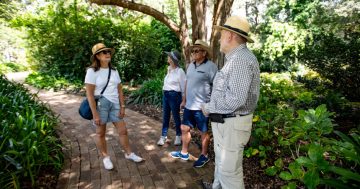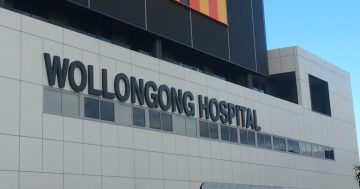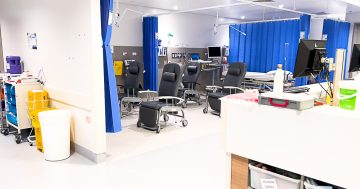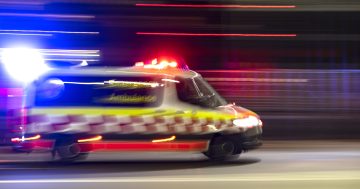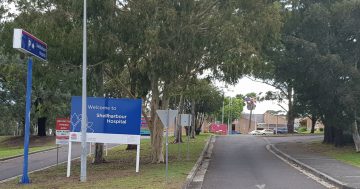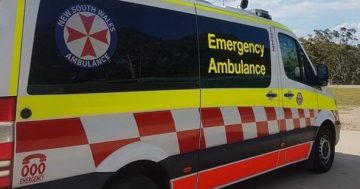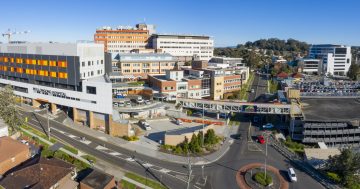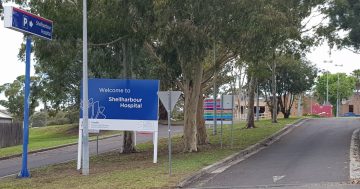
Wollongong Hospital’s emergency department wait times have been put under the microscope in a new report. Photo: Keeli Dyson.
Patients attending Wollongong Hospital’s emergency department (ED) should be prepared to spend most of the day there, with a new report showing more than one in six attendees spent in excess of 12 hours in the department before they were discharged, transferred or admitted.
Figures from the Bureau of Health Information (BHI) Quarterly Report for the first three months of this year revealed that although more patients started treatment on time, many were stuck in the ED for hours.
For the 4458 patients treated and admitted, and the 189 transferred to another hospital, the median time spent in the department was 13 hours and 3 minutes, with the 90th percentile in this category remaining in ED for 26 hours and 31 minutes.
Two thousand three hundred and fifty-nine attendees left without or before completing treatment.
The 9120 patients that were treated and discharged stayed a median 4 hours 23 minutes, while 2304 treated and admitted to the hospital’s Emergency Short Stay Unit (ESSU) stayed just short of four hours.
Illawarra Shoalhaven Local Health District Executive Director Clinical Operations Margaret Martin said this unit was set to be able to cater for even more patients after an expansion was completed.
“The district continues to utilise the ESSUs at Wollongong and Shoalhaven hospitals to provide short periods of ongoing treatment and observation for patients with moderately complex conditions, improving treatment times and patient flow in the ED.
“Work has recently commenced on an expansion of Wollongong Hospital’s ESSU, as part of the $480.7 million NSW Government ED relief package for the state.
“The expansion will provide six new treatment spaces, increasing the total from 10 to 16, further enhancing the hospital’s use of the ESSUs.”
Although there was still a high number of emergency presentations across the region, a total of 43,182, there was a significant decrease in non-urgent presentations, with the number in this category dropping 23.4 per cent from the same time last year, to just 2475 presentations.
“One of the district’s key strategies is providing the right care in the right place and reducing non-urgent presentations to the ED,” Ms Martin said.
“This includes improving the use of virtual and community health initiatives, providing dedicated models of care for older patients in non-hospital settings, and promoting the use of urgent care services and healthdirect for minor illness and injury.”
More elective surgeries (20.7 per cent) were performed in the region than the same quarter last year, but there was still an increase of 50 patients waiting longer than recommended than in January to March 2024.
With elective surgery waitlists remaining a statewide issue, the NSW Government announced an investment of $23 million to the area in the upcoming budget to enable an additional 3500 surgeries across NSW to be completed over the next year.
“From day one, tackling overdue surgeries has been our priority,” Health Minister and Keira MP Ryan Park said.
“We made significant progress in reducing the overdue surgeries that we inherited, down from 14,000.
“But we know there’s always more that we can do to improve the accessibility of planned surgeries.”
Wollongong MP Paul Scully said the Illawarra community had already benefitted and would continue to benefit from investments like this.
“Boosting access to surgeries in a timely manner is an investment in our health system that has already shown results,” Minister Scully said.
“This is the type of investment, along with the new equipment at Wollongong Hospital, additional staff in Wollongong Hospital Emergency Department, construction of the new Warrawong Community Health Centre and opening of the new Fairy Meadow Ambulance Station that will help to deliver better health outcomes for people in the Illawarra.”
Strategies implemented by ISLHD to improve surgical waitlists include resourcing an additional operating theatre at Shoalhaven Hospital, extending selected planned orthopaedic operating lists at Wollongong Hospital, scheduling additional ophthamology sessions at Shellharbour Hospital, using innovative models to support additional same-day discharge for clinically suitable procedures and patients, and continuing partnerships with local private facilities to undertake public planned surgery.








